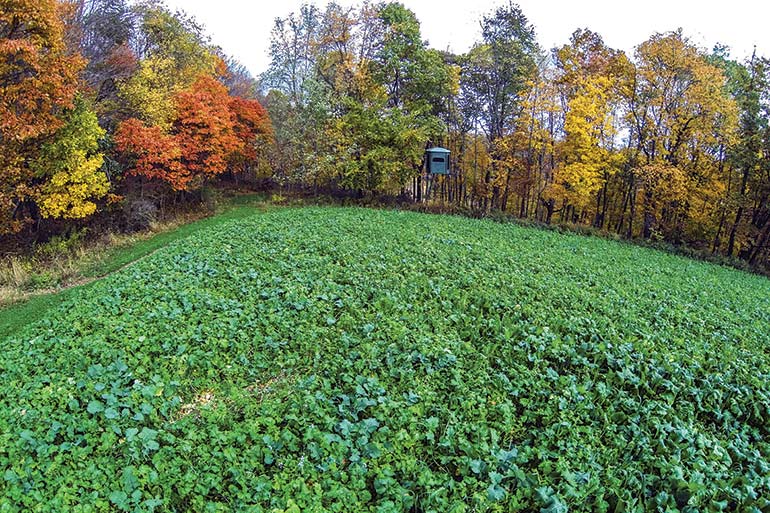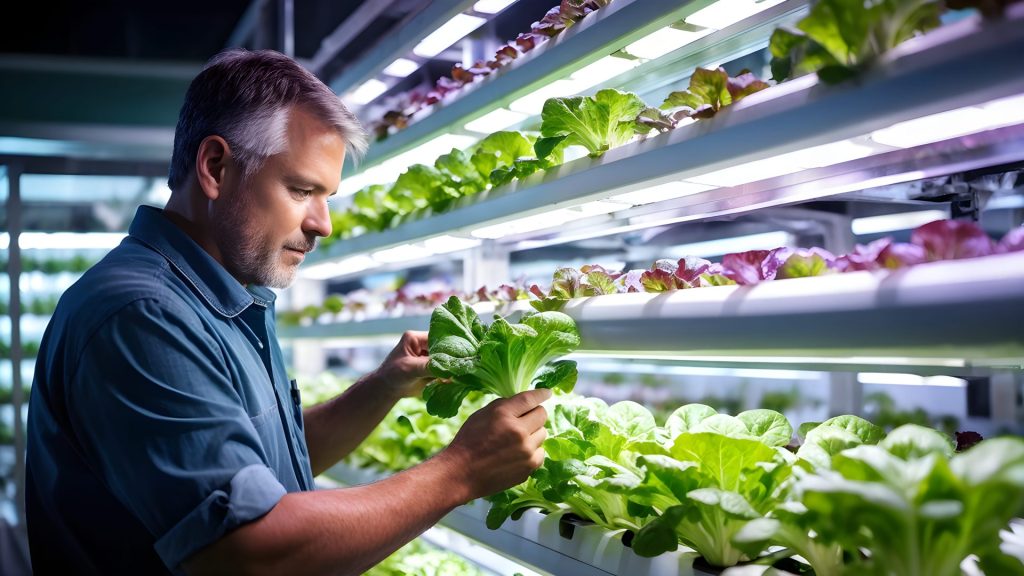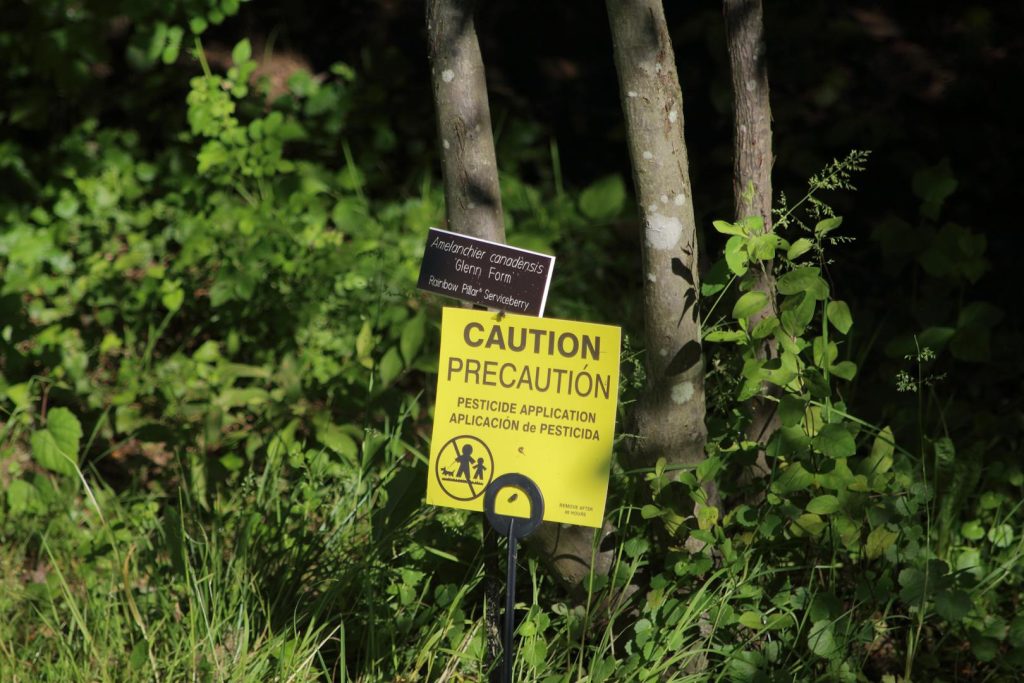Plant food plots for deer in spring or late summer. Timing ensures optimal growth and nutrition for deer.
Planting food plots for deer is essential for attracting and maintaining a healthy deer population. Ideal planting times are spring and late summer, aligning with deer dietary needs and seasonal growth patterns. Spring planting provides essential nutrients during fawning season, while late summer planting prepares deer for the rigors of winter.
Choose the right seeds and prepare the soil properly to ensure maximum yield. Consider soil testing to determine the best amendments for your specific plot. Proper planning and timing ensure your food plot is lush and nutritious, supporting deer health and attracting more wildlife to your area.
Best Seasons For Planting
Planting food plots for deer requires careful timing to ensure the best growth and nutrition. Choosing the right season can make a significant difference in the success of your food plots. The best seasons for planting are typically spring and fall, each offering unique benefits for deer nutrition and habitat.
Spring Planting
Spring is an excellent time to plant food plots for deer. The warming temperatures and increased rainfall create ideal conditions for seed germination and growth. Spring planting helps provide deer with essential nutrients during the early growth period. Here are some key points to consider:
- Plant cool-season annuals like clover, chicory, and alfalfa.
- Opt for perennial plants that can establish strong root systems.
- Timing is crucial – plant after the last frost.
| Benefits | Details |
|---|---|
| Early Nutrition | Provides essential nutrients after winter. |
| Strong Root Systems | Helps plants survive summer heat. |
| Extended Growth | Plants can grow throughout the summer. |
Spring planting ensures that deer have access to high-quality forage during critical growth periods. It can help improve their overall health and support fawn development.
Fall Planting
Fall planting is another optimal time for establishing food plots. The cooler temperatures and increased rainfall create a favorable environment for many plant species. Planting in the fall can help provide deer with necessary nutrients before winter. Consider these points:
- Plant cool-season annuals like winter wheat, oats, and rye.
- Consider brassicas such as turnips and radishes.
- Plant early enough to allow plants to establish before frost.
| Advantages | Details |
|---|---|
| Enhanced Nutrition | Provides vital nutrients before winter. |
| Winter Forage | Ensures food availability during harsh months. |
| Weed Control | Cooler temperatures reduce weed competition. |
Fall planting helps sustain deer populations through the winter, ensuring they have the energy and nutrition needed to survive and thrive. It also prepares them for the upcoming breeding season.
Soil Preparation Tips
Planting food plots for deer can help attract and nourish wildlife on your property. The success of these plots depends heavily on how well you prepare your soil. Proper soil preparation ensures your plants will grow strong and healthy, providing the necessary nutrients for deer. Here are some essential soil preparation tips to help you get started.
Testing Soil Ph
Before planting, it’s crucial to test your soil’s pH. Soil pH affects how plants absorb nutrients. Deer prefer food plots with healthy, nutrient-rich plants. Follow these steps to test your soil pH:
- Collect soil samples: Gather soil from different spots in your plot. Mix them for an average pH reading.
- Use a soil test kit: Purchase a soil test kit from a garden center. Follow the instructions to test the pH.
- Send samples to a lab: For more accurate results, send soil samples to a professional lab.
Soil pH should be between 6.0 and 7.0 for most food plot plants. If the pH is too low or high, plants won’t absorb nutrients properly.
| pH Level | Condition |
|---|---|
| Below 6.0 | Too acidic |
| 6.0 – 7.0 | Ideal |
| Above 7.0 | Too alkaline |
If your soil is too acidic, add lime to raise the pH. If it’s too alkaline, add sulfur to lower the pH. Always follow product instructions for best results.
Adding Nutrients
Healthy plants need essential nutrients to grow. Adding nutrients to your soil ensures a lush food plot for deer. Here’s a step-by-step guide:
- Identify nutrient needs: Use your soil test results to determine what nutrients your soil lacks.
- Select the right fertilizer: Choose a fertilizer based on your soil’s deficiencies. Common fertilizers include nitrogen, phosphorus, and potassium.
- Calculate the amount: Follow the recommendations on the fertilizer package to apply the correct amount.
- Apply the fertilizer: Spread the fertilizer evenly across your food plot. Use a spreader for larger areas.
Organic matter like compost or manure can also improve soil health. Mix it into the top 6 inches of soil for best results.
Regularly monitor your soil’s nutrient levels. Adjust your fertilization plan as needed to maintain a healthy food plot. This ensures your plants grow robust and provide ample forage for deer.
Choosing The Right Crops
Planting food plots for deer can be an effective way to attract and support the local deer population. Choosing the right crops is essential for a successful food plot. The crops should meet the nutritional needs of deer and thrive in your specific climate. In this section, we explore some of the best options, focusing on native grasses, legumes, and clovers.
Native Grasses
Native grasses are a great choice for food plots because they are well-adapted to the local environment. These grasses provide essential nutrients and cover for deer throughout the year. Here are some popular native grasses to consider:
- Big Bluestem: Known for its high protein content, it’s a favorite among deer.
- Switchgrass: Provides excellent cover and nutrition, especially in winter.
- Indian Grass: Offers a good mix of nutrients and grows well in various soil types.
To help you choose the best native grass for your food plot, consider the following table:
| Grass Type | Growing Season | Soil Preference | Deer Preference |
|---|---|---|---|
| Big Bluestem | Summer | Loamy, well-drained | High |
| Switchgrass | Summer | Clay, sandy | Medium |
| Indian Grass | Summer | Various soil types | High |
Legumes And Clovers
Legumes and clovers are excellent choices for deer food plots. They are nutrient-rich and attract deer effectively. These plants also improve soil health by fixing nitrogen. Here are some top options:
- Red Clover: Offers high protein content and is easy to grow.
- White Clover: Highly attractive to deer and provides year-round nutrition.
- Alfalfa: Known for its high yield and nutritional value.
When selecting legumes and clovers, consider the following:
- Soil Type: Ensure the soil is well-drained and fertile for best results.
- Climate: Choose varieties that thrive in your local climate.
- Deer Preference: Opt for plants that are highly palatable to deer.
The table below provides more details:
| Plant | Growing Season | Soil Preference | Deer Preference |
|---|---|---|---|
| Red Clover | Spring | Well-drained, fertile | High |
| White Clover | Spring | Moist, well-drained | Very High |
| Alfalfa | Spring | Loamy, well-drained | High |
Timing For Optimal Growth
Planting food plots for deer requires precise timing to ensure optimal growth. The timing affects the availability of food for deer, especially during critical seasons. Understanding the key factors like frost dates and growing degree days is crucial for successful food plots. These factors help in determining the best planting times for different crops, ensuring they thrive and provide the necessary nutrition for deer.
Frost Dates
Knowing the frost dates in your area is essential for planning food plots. Frost dates indicate the last spring frost and the first fall frost. Planting too early or too late can damage crops.
Use the following steps to determine frost dates:
- Check historical weather data for your region.
- Identify the average last frost date in spring.
- Identify the average first frost date in fall.
Here is an example table of average frost dates for different regions:
| Region | Last Spring Frost | First Fall Frost |
|---|---|---|
| Midwest | April 15 | October 15 |
| South | March 20 | November 10 |
| Northeast | May 5 | October 5 |
| West | April 1 | October 20 |
Plant after the last spring frost to avoid freezing young plants. Plan harvest before the first fall frost to ensure crops are mature and nutritious for deer.
Growing Degree Days
Growing Degree Days (GDD) measure heat accumulation to predict plant development stages. Calculating GDD helps in determining the best planting time for food plots.
Use the formula: GDD = ((Max Temp + Min Temp)/2) - Base Temp
Here are the steps to calculate GDD:
- Record daily maximum and minimum temperatures.
- Calculate the average temperature for the day.
- Subtract the base temperature (usually 50°F).
For example, if the maximum temperature is 75°F and the minimum is 55°F:
- Average temperature = (75 + 55) / 2 = 65°F
- GDD = 65 – 50 = 15 GDD
Track GDD to understand when to plant and harvest. Different crops require different GDD for optimal growth. For instance:
| Crop | Required GDD |
|---|---|
| Corn | 1500 GDD |
| Soybeans | 1300 GDD |
| Wheat | 1200 GDD |
Monitor GDD to ensure crops are planted at the optimal time, providing a healthy and abundant food source for deer.
Weather Considerations
Plant food plots for deer is a great way to attract and nourish wildlife. Timing the planting correctly is crucial for success. One of the most important factors to consider is the weather. Understanding the weather helps ensure that your food plots thrive and provide the best nutrition for deer. Let’s delve into key weather considerations, focusing on rainfall patterns and temperature fluctuations.
Rainfall Patterns
Rainfall is vital for food plots. It ensures seeds germinate and plants grow strong. Observing local rainfall patterns helps choose the best planting times. Here are some key points to consider:
- Consistent Rainfall: Consistent rainfall supports steady plant growth. Check historical data for your area to find periods with reliable rain.
- Avoid Dry Spells: Planting before a known dry spell risks seed germination. Seeds need moisture to sprout. Ensure adequate rainfall is forecasted after planting.
- Soil Moisture Levels: Soil must retain moisture for optimal seed germination. Test soil moisture regularly. Well-moisturized soil is ideal for planting.
Refer to this table for a quick overview of rainfall considerations:
| Factor | Importance |
|---|---|
| Consistent Rainfall | Ensures steady growth |
| Avoid Dry Spells | Prevents seed failure |
| Soil Moisture Levels | Supports germination |
Temperature Fluctuations
Temperature significantly impacts the success of plant food plots. Both extreme heat and cold can harm plant growth. Consider these factors:
- Ideal Temperature Range: Most food plot plants thrive between 60°F and 75°F. Plant during these temperatures for optimal growth.
- Avoid Frost: Frost can kill young plants. Avoid planting when frost is likely. Check the last frost date in your area.
- Heat Tolerance: Some plants withstand higher temperatures. Choose heat-tolerant varieties if planting in warmer months.
Here is a table summarizing temperature considerations:
| Factor | Importance |
|---|---|
| Ideal Temperature Range | Supports plant health |
| Avoid Frost | Prevents plant death |
| Heat Tolerance | Ensures survival in heat |
Considering these weather factors helps ensure your food plots grow well. Proper planning leads to a thriving deer habitat.
Plot Location Strategies
Planting food plots for deer involves more than just picking a spot and sowing seeds. The location of your plot plays a crucial role in its success. Effective Plot Location Strategies can make the difference between a thriving deer habitat and a lackluster one. Let’s explore some key elements of plot location.
Sunlight Exposure
Sunlight is vital for the growth of your plant food plot. Deer prefer lush, green areas, and those only flourish with adequate sunlight. Aim for 6-8 hours of direct sunlight daily.
Consider these factors:
- Tree Canopy: Check the tree cover. Too many trees can block sunlight.
- Slope: South-facing slopes get more sunlight.
- Seasonal Changes: Remember that sunlight patterns change with seasons.
Here’s a quick table to help you assess sunlight exposure:
| Factor | Optimal Condition |
|---|---|
| Tree Canopy | Minimal cover |
| Slope | South-facing |
| Daily Sunlight | 6-8 hours |
Natural Cover
Natural cover is essential for deer safety and plot success. Deer need places to hide and rest. Natural cover provides this.
Consider these elements:
- Brush and Thickets: Areas with dense brush offer excellent cover.
- Edge Habitat: Plant near woods or fields for natural cover.
- Water Sources: Proximity to water ensures deer frequent the area.
Creating a balanced environment with natural cover and food plots will attract more deer. Here’s a quick checklist:
| Element | Importance |
|---|---|
| Brush and Thickets | High |
| Edge Habitat | Medium |
| Water Sources | High |
By focusing on sunlight exposure and natural cover, you can create an ideal food plot that attracts deer and keeps them coming back.
Maintenance After Planting
Plant food plots for deer is a rewarding task that can greatly improve the health and population of your local deer herd. Once you have successfully planted your food plots, the next critical step is maintenance. Proper maintenance ensures the longevity and productivity of your food plots. This includes tasks such as weed control and following a fertilization schedule.
Weed Control
Weeds can quickly overtake your food plot if not managed properly. Effective weed control is essential to ensure your plants get the nutrients and sunlight they need. Here are some strategies for keeping weeds at bay:
- Pre-emergent herbicides: Apply these before the weeds start to grow. They help prevent weed seeds from germinating.
- Post-emergent herbicides: Use these after the weeds have appeared. They kill existing weeds without harming your food plot plants.
- Mechanical removal: Hand-pull or hoe out weeds, especially in small plots. This is labor-intensive but effective.
Consistency is key. Regularly inspect your food plots and address any weed issues promptly. This proactive approach will ensure your plants stay healthy and vigorous.
| Weed Control Method | Best Time to Apply | Notes |
|---|---|---|
| Pre-emergent Herbicides | Early Spring | Before weeds germinate |
| Post-emergent Herbicides | As needed | After weeds appear |
| Mechanical Removal | Throughout growing season | Labor-intensive but effective |
Fertilization Schedule
Proper fertilization ensures your plant food plot plants receive the nutrients they need to thrive. A well-planned fertilization schedule can significantly improve the growth and quality of your food plots. Here’s a basic fertilization schedule to follow:
- Soil Testing: Before planting, test your soil to determine its nutrient content. This will help you choose the right type and amount of fertilizer.
- Initial Fertilization: Apply a balanced fertilizer at planting time. This provides a good nutrient base for your plants.
- Mid-season Boost: About 6-8 weeks after planting, apply a nitrogen-rich fertilizer. This promotes leafy growth and overall plant health.
- Late-season Application: Apply a potassium-rich fertilizer as the plants start to mature. Potassium helps with root development and disease resistance.
Here is a simple fertilization schedule:
| Stage | Fertilizer Type | Application Time |
|---|---|---|
| Initial Fertilization | Balanced Fertilizer | At Planting |
| Mid-season Boost | Nitrogen-rich Fertilizer | 6-8 Weeks After Planting |
| Late-season Application | Potassium-rich Fertilizer | As Plants Mature |
By following this schedule, you can ensure your plant food plots remain productive and provide a reliable food source for deer throughout the season.
Monitoring Deer Activity
Planting food plots for deer is a rewarding endeavor. Knowing the best time to plant ensures a thriving plot. Monitoring deer activity is crucial. It helps in understanding deer habits and ensuring your plot flourishes.
Trail Cameras
Trail cameras are essential for monitoring deer activity. They capture images and videos of deer visiting your food plot. This helps in determining the best times to plant and manage your plots.
Here are some benefits of using trail cameras:
- 24/7 Surveillance: Trail cameras work day and night. They capture everything, giving a complete picture of deer activity.
- Pattern Recognition: Regular monitoring helps in recognizing deer patterns. Knowing their feeding times and routes helps in planning your planting schedule.
- Wildlife Behavior: Trail cameras help in understanding the behavior of other wildlife. This helps in taking steps to protect your food plots from unwanted visitors.
Setting up trail cameras is simple. Follow these tips for the best results:
- Location: Place cameras near trails, water sources, and food plots.
- Height: Mount cameras 3-4 feet above ground. This height captures clear images of deer.
- Angle: Position cameras at a slight downward angle. This ensures a wider field of view.
- Check Regularly: Check cameras weekly. This keeps you updated on deer activity.
Use trail cameras effectively. They provide valuable insights and improve your chances of a successful food plot.
Signs Of Feeding
Observing signs of feeding is another way to monitor deer activity. These signs indicate the presence and habits of deer in your area. Recognizing these signs helps in deciding the best time to plant your food plots.
Look for these signs of deer feeding:
- Tracks: Deer leave distinctive tracks. Look for hoof prints around your food plots.
- Droppings: Deer droppings are an unmistakable sign. Fresh droppings indicate recent activity.
- Browse Lines: Deer feed on shrubs and trees. A browse line, where vegetation is eaten up to a certain height, shows deer activity.
- Rubs: Bucks rub their antlers on trees. Look for stripped bark and tree damage.
- Scrapes: Bucks scrape the ground to mark their territory. These are shallow depressions with pawed-up soil and leaves.
Monitoring these signs helps in understanding deer feeding habits:
| Sign | Indication |
|---|---|
| Tracks | Shows deer movement patterns |
| Droppings | Indicates recent activity |
| Browse Lines | Shows feeding height and preferences |
| Rubs | Indicates buck presence |
| Scrapes | Shows territorial marking |
Using these signs helps in planning your plant food plot planting schedule. Ensure you monitor regularly for the best results.
Common Mistakes To Avoid
Planting food plots for deer is an excellent way to attract wildlife and support healthy deer populations. However, many people make common mistakes that can jeopardize their efforts. Knowing these mistakes and how to avoid them can ensure your food plot thrives and serves its purpose. Let’s look at some of the most common mistakes to avoid.
Planting Too Early
One of the most common mistakes is planting too early. Planting too early can result in poor germination and growth. Here are some reasons why:
- Temperature: Seeds need warm soil to germinate. Planting when the soil is too cold can lead to seed rot and poor sprouting.
- Frost Risk: Early planting risks exposure to late frosts, which can kill young plants.
- Weather Patterns: Early planting might coincide with unpredictable spring weather, such as heavy rains that can wash away seeds.
To avoid planting too early, consider these tips:
- Check the soil temperature. It should be consistently above 60°F for most seeds.
- Observe local frost dates. Plant after the last expected frost date in your area.
- Monitor long-term weather forecasts for stable conditions.
Ignoring Soil Health
Another critical mistake is ignoring soil health. Healthy soil is the foundation of a successful food plot. Here are some key aspects to consider:
- pH Levels: Soil pH affects nutrient availability. Most plants thrive in soil with a pH between 6.0 and 7.0.
- Nutrient Content: Soil needs adequate levels of nitrogen, phosphorus, and potassium for plant growth.
- Soil Structure: Good soil structure promotes root growth and water retention.
To maintain soil health, follow these steps:
- Conduct a soil test to determine pH and nutrient levels.
- Amend the soil based on test results. Lime can adjust pH, and fertilizers can add necessary nutrients.
- Rotate crops to prevent soil depletion and reduce pest buildup.
Here’s a quick reference table:
| Soil Aspect | Ideal Range | Amendments |
|---|---|---|
| pH Level | 6.0 – 7.0 | Lime (raise pH), Sulfur (lower pH) |
| Nitrogen | 50-100 ppm | Compost, Manure, Nitrogen fertilizers |
| Phosphorus | 20-40 ppm | Bone meal, Rock phosphate |
| Potassium | 80-150 ppm | Potash, Kelp meal |
Seasonal Adjustments
Planting food plots for deer is a rewarding way to attract and sustain wildlife. Understanding the best times to plant ensures your efforts yield the best results. Seasonal adjustments play a crucial role in this process. Adapting your planting strategies to fit the changing seasons can make a significant difference in food plot success.
Replanting Strategies
Replanting food plots is essential when initial plantings fail or deer overgraze. Knowing how and when to replant can save time and resources. Here are some effective replanting strategies:
- Assess Damage: Check the plot for damage. Determine if it’s due to poor soil, pests, or weather conditions.
- Choose the Right Seed: Select seeds that grow quickly and are suitable for the current season. For example, clover and oats work well in early spring.
- Improve Soil Health: Test the soil. Add necessary nutrients like lime or fertilizer to enhance growth.
- Plant in Stages: Plant seeds in stages to ensure continuous food supply. This helps if one batch fails, another is ready.
Implementing these replanting strategies ensures your food plots remain attractive to deer throughout the year.
Adjusting For Weather Changes
Weather changes can greatly impact your plant food plots. Adjusting your planting schedule and techniques based on the weather is vital. Consider the following tips:
- Monitor Weather Patterns: Keep an eye on the weather forecast. Plant before expected rain to help seeds germinate.
- Use Drought-Resistant Plants: In dry conditions, use drought-resistant plants like chicory and alfalfa.
- Protect from Frost: In colder months, select frost-resistant plants. Brassicas are a good choice.
- Water Management: Ensure proper irrigation during dry spells. Watering early in the morning reduces evaporation.
Adjusting your planting strategy for weather changes maximizes the success of your food plots and provides a reliable food source for deer year-round.
Frequently Asked Questions
What Is The Best Time To Plant Deer Food Plots?
Early spring or late summer are ideal for planting deer food plots.
Which Crops Attract Deer The Most?
Crops like clover, soybeans, and turnips are highly attractive to deer.
How Do I Prepare Soil For Deer Plots?
Test soil pH, till thoroughly, and add recommended fertilizers for optimal growth.
Can Food Plots Survive Winter?
Yes, certain crops like winter wheat and brassicas can survive and thrive in winter conditions.
How Large Should A Deer Food Plot Be?
Aim for at least one acre to ensure adequate food supply for deer.
Conclusion
Plant food plots for deer requires careful timing for maximum success. Spring and fall are ideal planting seasons. Assess your local climate and deer needs. Properly timed planting ensures healthy growth and attracts more deer. Follow these guidelines to create thriving food plots and support the local deer population.





